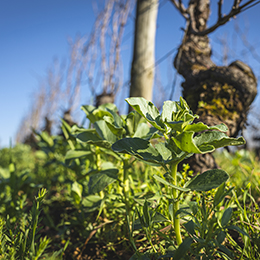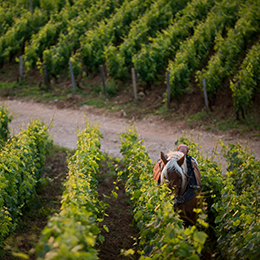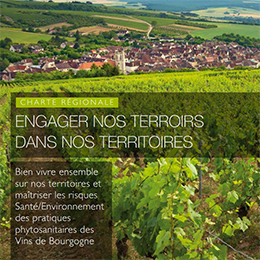For 2,000 years, the Bourgogne has demonstrated its capacity to adapt to climatic, historical, economic and social circumstances. It has thus become one of the most sustainable wine regions on the planet. This quest for sustainability is a permanent concern, which is why the Bourgogne wine sector has embarked on the path of Sustainable Development through a concerted approach.

Sustainable Development and preservation of the environment are inseparable. Although this connection may seem obvious, it is not enough on its own define Sustainable Development.
This notion is structured around three inseparable pillars of equal importance:
- The environment
- The economy
- Social factors
Sustainable Development means economically effective development, that is socially equitable and ecologically sustainable.
The Bourgogne benefits from a privileged geographical situation, whose unique potential has been magnified by the work of men and women since Antiquity. This historical combination has led to the winegrowing landscape we see today, characterized by the patchwork of plots, or Climats, which was included on the UNESCO World Heritage List in July 2015. The winemakers and négociants of the Bourgogne region want to preserve this priceless heritage to pass it on to future generations. So it’s only natural that the sector has embarked on the path of Sustainable Development.

The Sustainable Development approach adopted for Bourgogne wines is based on wide cooperation between all the internal and external stakeholders in the sector, and is structured around seven main axes:
1 - Preserving the territory, its environment, and natural resources
2 - Ensuring the highest quality standards for wines
3 - Guaranteeing the economic sustainability of the sector and its stakeholders
4 - Encouraging good working conditions
5 - Contributing to the development of the territory and its inhabitants, through the evolution of companies and practices
6 - Improving interchange between in-the-field experiences and the world of research, teaching and experimentation
7 - Implementing a Sustainable Development plan of action
These axes led to the establishment of a common plan of action for the sector.

During its recent general assembly (04/07/2018), the Bourgogne Wine Board (BIVB) brought together its partners to sign a Regional Charter with the title “Terroir and Territory: A Commitment for the Future” in the presence of representatives of central government. This initiative from winegrowers themselves is the result of a cooperation between the BIVB and the Confederation of Bourgogne Appellations and Winegrowers (CAVB), and aims to respond to societal expectations with regard to the use of pest and disease control products in the vines. The Charter includes an action plan, the feasibility of which will be tested in the vines over a year before being widened out.
The Regional Charter draws on four main fundamentals:
- Dialog with local people and bodies, and shared experiments. The aim is not to duplicate what has been done elsewhere, but to adapt best practices to the reality of the Bourgogne.
- A structured campaign involving winegrowers, négociants, and lawmakers, with the support of the CAVB and the BIVB. Projects will also be driven by the ODGs, which form an essential local support network.
- An initial budget of €100,000 euros has been approved by the BIVB for the 2017/2018 period, to finance activities.
- An initial 12-month phase to test the actions proposed, which will be followed by a report and the setting of quantitative goals.
Download Regional Charter with the title “Terroir and Territory